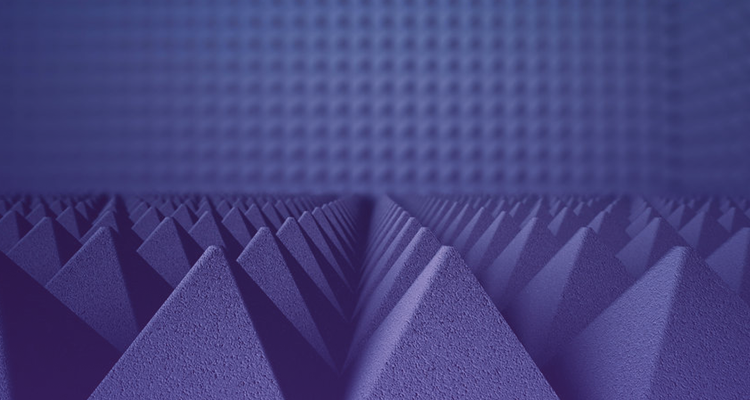Acoustics, Commercial Spaces and the Post-COVID World

In recent months my company has seen an uptick in requests to consult on acoustics solutions and installations in commercial spaces. Some of these clients reached out for assistance on new builds, but most of them were looking for solutions to integrate into existing spaces. In many cases, the request stemmed from the need to repurpose existing spaces as people come back to work post-COVID. And all of these conversations have undoubtedly reaffirmed my belief that every integrator should be selling acoustics along with their technology solutions, especially in this era as offices, classrooms and public spaces re-open. Not as an upsell, mind you, instead, as an integral component of the entire AV ecosystem.
As offices begin to welcome back workers, it is clear that many existing rooms and spaces will be utilized differently to accommodate health and safety protocols and employees’ overall comfort in the workplace. For example, integrators may be engaged to transform open common areas or larger rooms into meeting spaces to offer more spacious and open areas instead of the standard small and enclosed conference rooms. In theory, this is a sensible solution. However, these common areas and large spacious rooms are hardly ever designed to be acoustically isolated from surrounding work areas. Adding meeting and conferencing technology to these open spaces may offer the comfort of social distancing but result in major distraction and disruption for co-workers in surrounding areas. In addition, noise will inevitably spill out of these repurposed areas and, in a large company with many employees, this would lead to a cacophony of sounds and thus, inability to work.
This is a perfect opportunity for the integrator to include proper acoustic solutions as part of their package BEFORE the spaces are transformed. Incorporating acoustics products that are put in place in conjunction with the installed technology can help to mitigate the amount of noise transmitted from space to space. The idea is not to completely isolate or soundproof anything. Instead, the goal is to reduce the amount of sound energy traveling and bouncing around the room. Often, acoustics solutions (and I include sound-masking among them) can do wonders for sound transmission in open office environments.
Offices are not the only workplaces where these solutions should be offered. Here are a few other cases where acoustics can be implemented to provide an optimal experience:
Medical Practices
Over the last year, I’ve been to several doctor’s offices and clinics where the waiting rooms had to be redesigned to allow for social distancing. There were also cases where reception had to be moved (away from an actual reception desk) into a public area or waiting room. In a medical environment, patient privacy is paramount. Therefore, patients speaking with medical professionals in open areas is very problematic. This is a perfect example of where sound-masking can be used to offer privacy in an open public space. Truthfully, this is something that should be provided even in a non-COVID-modified room. The reception desk, nursing stations and even exam rooms are not always acoustically treated or isolated. They should be! Keeping patient information private does not just include a covered-up medical chart. Conversations about patients should also always be private, and acoustic solutions can help significantly in this regard.
Education
As more and more higher-ed institutions build out hybrid or HyFlex classrooms, the need for clear and accurate microphone and sound-capturing technology is integral to the success of the integration. While many products offer mic arrays with automatic echo cancellation (AEC) and ambient noise attenuation and cancellation, sometimes a classroom or lecture hall is difficult to tame. Students — who are attending class in person and remotely — have trouble hearing and understanding an instructor clearly. Very often, a few strategically placed acoustic absorbers and/or diffusers can turn an acoustically troubling room into an ideal environment for teaching and communication. Knowing what technology products are used in the design phase of the HyFlex classroom can help determine what acoustic products to use so the technology performs at its optimal potential. To reiterate, these solutions should be included in the design phase as integral components for a successful deployment.
Hospitality
There are multiple opportunities to sell acoustics solutions in the hospitality sector. As restaurants open back up to full capacity and as hotels begin to fill their rooms with travelers again, integrators will be called upon to update digital signage, install or upgrade sound and playback systems and reconfigure conference centers, party rooms and meeting spaces. Restaurants and hotel lobbies are notoriously reverberant (and can be unpleasant for guests to sit in). For restaurants, in particular, the unpleasantness of loud ambient sound can be a death knell.
In most cases, strategically designed and installed acoustic products can solve these issues relatively easily. I say “designed” because aesthetics are critical to the ambiance and vibe of a room in the world of hospitality. Integrators can work with acoustics vendors that offer products manufactured specifically with architecture and aesthetics in mind. They can even go even further and install products that are covered in printed artwork or photos. As a result, acoustic products can be both functional AND design-enhancing!
There are many other environments and commercial sectors where acoustics solutions can provide an immediate and measurable benefit. The key is for integrators to start thinking of these solutions as an integral component of their AV systems designs and not just a potential add-on for clients with some money leftover in the budget.
In almost every instance, properly deployed acoustics solutions enhance integrated technology and allow a system to perform at its peak potential. Ultimately, customers and clients will recognize the superior effectiveness of systems designed with acoustics in mind and the integrators that designed and installed them. That will inevitably result in more projects from those clients and more referrals and a better overall reputation. In these post-COVID times, with commercial spaces being transformed and/or repurposed, selling acoustics solutions should be a no-brainer.





